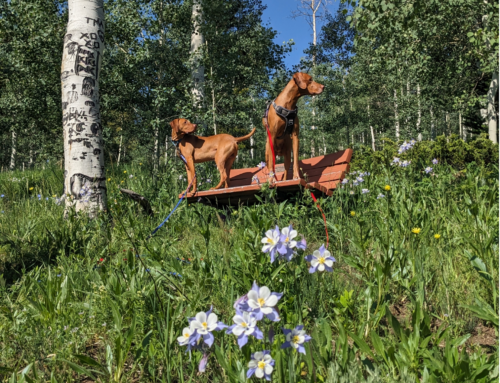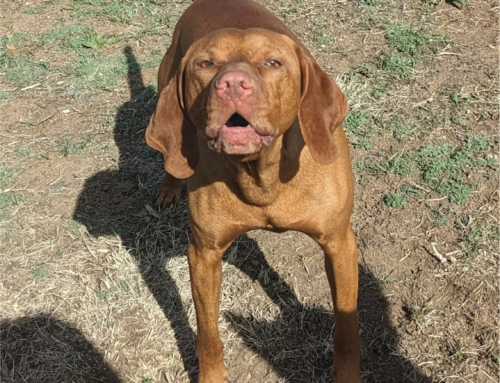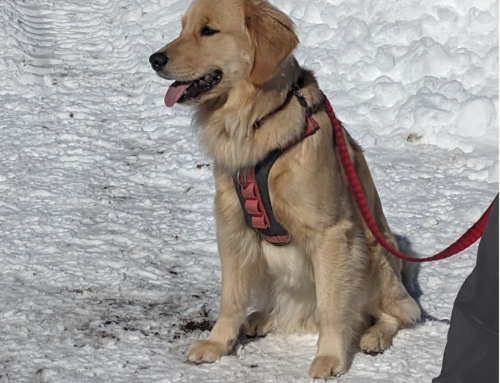DOG TRAINING OFFERED IN-PERSON AND ONLINEOur dog training services are delivered in almost any format that meets your needs. We have GROUP CLASSES at our indoor and outdoor facilities on our farm, ONLINE LIVE STREAMING classes, and SELF-PACED VIDEO-BASED training through our Online Dog Training Course. Our PRIVATE TRAININGS can be done in-home, outside, in public dog-friendly locations, at our facility on our farm, online via phone or video conferencing and through email. |
In this post, we'll give you some quick and easy tips for taking care of your dog's teeth, ears and nails.
Your response might be…”but that is what I have my vet and my groomer for”
Well, that is one way to look at it, but having someone else provide this kind of care is going to cost you money that you could easily save by doing yourself.
And, it can be very stressful on our dogs for others to be handling them around these sensitive areas.
It is better for you to do it because they are more likely to trust you and feel comfortable with you.
Here is what we do.
Your dog's ears: Avoid potentially big problems later…here's a quick and easy cleaning regimen
You may not be aware, but you need to put on your calendar a regular regimen for ear inspections.
For some dogs, it might be daily, others it might be weekly or monthly. You really won't know until you just inspect your dog's ears and find out how often they get dirty and need cleaning.
And cleaning might just mean using a few cotton swabs, or it might include a natural cleaning solution. Be careful to not go deep and just clean out what you can see. We use a headlamp to help us out.
If you find you need more than just a cotton swab, then try this for a natural cleaning solution:
- 1/3 cup witch hazel;
- 3 tbsp hydrogen peroxide;
- 1 tbsp apple cider vinegar;
You can store the solution in a cool dry place.
To use, just dip it into the cotton swab. Use just a little – don't over-saturate.
And consider adding the following for specific ear conditions:
- add colloidal silver for ear infections;
- add oil of oregano for yeasty ears;
- add lavender for irritated ears;
- add neem oil for ear mites;
- Do not use any cleaner if there is a ruptured ear drum.
What if your dog does not take kindly to you digging in their ears?
Well, you really need to get them used to it first, and it is best to start when they are puppies. When you do it regularly, they will get much more used to it.
But even adults will get used to it if you stick to a regular schedule.
The easiest ways we have found to keep our dog's teeth in tip top shape
Teeth can be troublesome, largely because of the processed and dry foods we predominantly feed our dogs. Which then means more of our hard earned money being spent to get their teeth cleaned regularly, not to mention the trauma of having to put our beloved dogs under anesthesia for a risky procedure.
Would it not just be better if we fed our dogs exactly what they were meant to eat, which is a raw food diet, so that they have fewer issues with their teeth?
We can tell you that our raw dog food diet has improved our dogs' teeth and once we learned how to do it, we could not believe how easy it is to feed raw. You can learn more about how to feed raw food to your dog from our video training, here.
But, even with our raw food diet, we still have to do two little extra things to help keep our dogs' teeth clean.
Now, you could try brushing your dog's teeth on your own, but honestly, we know that most people will not take the time to do this. We understand! It takes time and practice to build cooperation. And if your dog has not been taught to cooperate, then the brushing that does occur probably won't do much good.
One thing we have found that helps is this all-natural product made from seaweed, which we include daily in their meals. See it here.
The second thing we do is let them chew/gnaw on big raw (never cooked) meaty bones. We get these direct from our ranchers where we purchase meat from for our food and our dog food products that we sell.
But they have to be big ones. Knuckle bones that they can't get a good grip on. Don't get anything small that they can choke on or splinter apart or wrap their whole jaw around it. You want big enough bones that they must gnaw on them and can't bite down. Anything hard like bones or antlers that they can wrap their jaw around also presents an increased risk for cracking and breaking teeth.
We do not recommend most commercial chew products as they are not only processed, but dogs can choke on them and they might swallow pieces that will end up back up on your carpet or the couch in the form of vomit.
But just like us humans, we cannot stress the main part of healthy teeth is diet. Give your dogs what they were meant to eat – raw food. Stay away from commercial dry foods. Then the rest becomes a lot easier to give them healthy teeth.
The easy way to trim dog nails
Many people are amazed when we tell them that nail trims for my dogs are drama-free, quick and require no restraint.
Is that possible, you ask? Why yes, it is!
We have worked hard to ensure nail trims are easy, as stress-free as possible, and require no restraint other than holding their paws still so we can cut nails with the nail clipper.
And here is the secret…regular practice and consistency!
What do we mean by that?
Well, we put on our calendar to trim my dogs' nails at least every other week. Because we do it so often, and have been doing it since we first got my dogs, it has become a habit not just for us, but more importantly, for our dogs.
It may take you some time to get your dog used to it, but trust us, it will come when you put it in your calendar to do each week.
The alternative is to have your vet or groomer do it every once in awhile, which is often not enough.
First, like human nails, it is important to check and trim nails often because nails grow. Do you want to be taking your dog to your vet or groomer every few weeks to trim nails? Maybe that is OK with you, but we do not have the time nor can afford it!
Second, we’ve seen what can happen at vet clinics or groomers when the techs have to muzzle and restrain dogs for nail trims. They get harder and harder to do each time, and the stress is overwhelming for some dogs.
So, how do you trim nails on your own so that you can do it quickly, easily, as stress-free as possible for your dog, and saves you money because you are doing it yourself?
We are glad you asked. Here is what we do:
1. Train your dogs to lie down on their side. (Or to hold another position if you find it easier.) Build this important “trick” into your training. Sue teaches this in some of her classes as well as our her online dog training course. See the instructional video here. It is very easy to do. Get your dog to do it all the time and reward them for it. Make sure that over time, you continue to build in longer time frames for them to hold this position by delaying their reward.
2. At the same time, you want to practice handling your dog so they get accustomed to you touching them. Touch their paws and nails and handle them often. This will help your dog get used to you doing that.
3. Start your nail trimming sessions by getting your dog to lie down as you taught them and start gently cutting away very small ends of their nails while they hold the down on the side position. You can recruit some help if you find it easier to have someone else feed while you trim nails.
4. You might have to break up your nail trimming sessions to start…doing only one foot or even one nail at a time and come back again later to do another. Be patient as you need to help your dog get used to these sessions. So, like Sue advises in her training, start with short sessions.
If you do the above and stay consistent, your dog will become more accustomed to it. Some dogs are OK with it very quickly, but others it takes time.
We find clippers to be the best tool, while other people prefer using a dremmel. The dremmel's noise plus the vibration is stressful for some dogs, so if you use one, make sure you help your dog adapt to the sound before using on the nails. We find nail clippers much easier to use.
If you need help understanding how best to cut the actual nails, have your groomer or vet tech demonstrate it for you. Even if you decide you just can't do it yourself, these steps will help make the actual trims done by your groomer or vet tech much easier. They will thank you for it!
Our goal is to positively impact the lives of as many dogs and their families as we can, in part through our extensive library of video, infographics and text articles. |










Leave A Comment